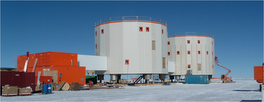Historical seismometers #1 - Wiechert
Modern seismometers are all well and good - in fact most are excellent - but they are not as fascinating as historical instruments. The institute I work at in Strasbourg runs a Seismology Museum that contains a superb collection of seismometers. In this series of posts, I'll be showcasing my favorite ones.
First up, the Wiechert horizontal seismometer, shown in the figure above [photo credit Michel Dufloux]. It is an entirely mechanical seismometer, made in Gottingen (Germany) in 1904, and was in use in the Strasbourg seismic observatory between 1904 and 1968.
It is essentially an inverted pendulum, which records both components of horizontal motion on rolls of smoked paper. It weighs 1000 kg, and has a natural period of 8 seconds. Damping is provided by two air-pistons on the top of the instrument. The pendulum is centered by placing a series of small weights on top of the main mass. This instrument is very delicate to set up and use, but it is truly a work of art.
The Wiechert in Strasbourg is no longer in operation, but is visible in our museum. However, the Wiechert Earthquake Station in Gottingen, which is open to the public, does have a working instrument.
-----
Keep up to date with the latest developments at http://sismordia.blogspot.com




No comments:
Post a Comment